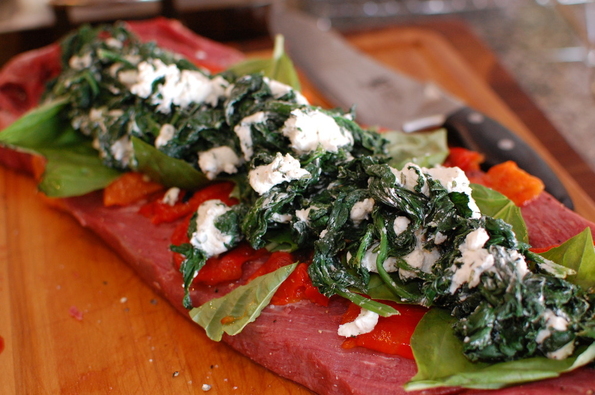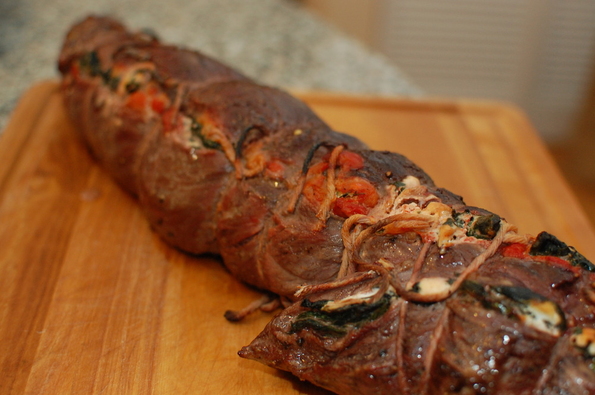Yesterday was my mom’s birthday, so I wanted to cook something a bit nicer than usual. Many years back, my dad made a beef tenderloin from a recipe in Bon Appetit (at least he says that’s where it was from — I found no record of said recipe on the internet). It was spectacular — buttery soft tenderloin with the earthy sweetness of red peppers and the tang of goat cheese. I’ve asked him a few times since to make it, but to no avail — it is quite a bit of work, so not necessarily an everyday recipe.
I’ve never made a tenderloin before, and I did find myself intimidated — as far as meat comes, tenderloin is pretty expensive and relatively unforgiving. Cut it wrong, and it will be very difficult to stuff properly. Overcook it, and there is very little buttery fat to hide the sin. After unwrapping the package I got from my local butcher, I stared down at it for a good three or four minutes, trying to figure out how I was going to butterfly it. The tough part is the thicker end, where the loin is basically two pieces, so one cut won’t butterfly both.
I ultimately opted to give each part its own cut and stuffing (although I left them connected). The next step was stuffing it with the red peppers, basil and goat cheese mixture. Layering these ingredients over the butterflied meat (which I also pounded to about 3/4″ thin) was easy — tying it all up, however, was more of a challenge. The thing that really saved me was the butcher’s knot, which I had come across earlier that day as I investigated the best way to tie up a roast. A butcher’s knot is designed to allow the cook to cinch tighter by simply sliding the knot up the string.
I cooked it to a beautiful medium rare, and served it with bay-scented domino potatoes and garlic sauteed green beans.
Recipe:
[If you look at the recipe — I made the port wine sauce, but ended up not serving it. The sauce recipe as it stands was too tomato-y for me, so if you make it, I would suggest starting with only a spoonful of tomato paste, and adding more as you see fit.]



